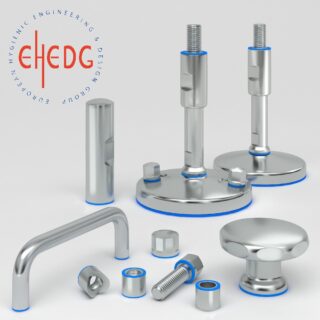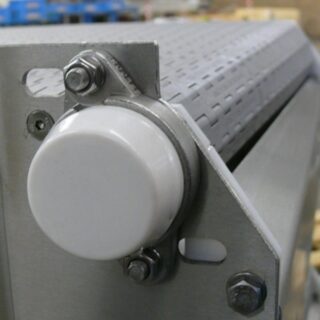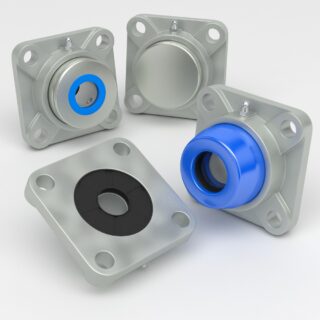Compliance with Regulations and Standards:
Many industries, especially those related to food and pharmaceuticals, are governed by strict regulations and standards to ensure product safety and quality. Using certified components ensures compliance with these regulations from the start, avoiding potential legal and financial penalties.
Prevention of Contamination:
In industries where hygiene is a critical concern, the design of machinery and equipment plays a vital role in preventing contamination. Certified components are designed to withstand cleaning processes, resist corrosion, and prevent the accumulation of bacteria and other contaminants. This is essential in maintaining the purity and safety of the products being manufactured or processed.
Durability and Reliability:
Certified industrial components are typically made to higher quality standards, offering greater durability and reliability. This reduces the risk of equipment failure and downtime, which can be costly in terms of both production losses and repair expenses.
Enhanced Safety:
The use of certified components also contributes to the overall safety of the machinery and equipment. This not only protects the products but also the operators and technicians who work with them, reducing the risk of accidents and injuries.
Consumer Confidence:
Employing certified components in the design and construction of machinery and equipment can enhance consumer confidence in the safety and quality of the products. This is particularly important in industries where consumer trust is a critical factor in the success of a brand.
Efficiency and Productivity:
Properly designed and constructed equipment using high-quality certified components can improve the efficiency and productivity of manufacturing and processing operations. This can lead to cost savings over time and increase the competitiveness of a business.
Sustainability:
Certified components often adhere to environmental standards, contributing to the sustainability goals of a company. This is increasingly important to both regulators and consumers, who are more and more conscious of the environmental impact of the products they purchase and the processes used to make them.
Conclusion:
The early adoption of certified industrial castors, leveling feet, and components in the design and construction of machinery and equipment is crucial for ensuring compliance, preventing contamination, and maintaining high standards of quality and safety in the production processes. This approach not only meets the stringent requirements of the food, cosmetic, pet food, chemical, and pharmaceutical industries but also contributes to the efficiency, reliability, and sustainability of the operations.
Implementing EHEDG certified components in food processing equipment can significantly improve food safety in several ways:
- Reduced Risk of Contamination: EHEDG certified components are designed and manufactured to strict hygienic standards, minimizing the risk of contamination from bacteria, pathogens, or foreign particles that could compromise food safety.
- Easy to Clean and Sanitize: EHEDG certified components are designed with smooth surfaces, rounded edges, and minimal crevices, making them easier to clean and sanitize effectively. This reduces the likelihood of microbial growth and cross-contamination.
- Improved Hygienic Design: EHEDG guidelines promote the use of materials that are resistant to corrosion, abrasion, and chemical damage, ensuring the durability and longevity of components while maintaining hygienic conditions.
- Enhanced Process Control: EHEDG certified components contribute to better process control by minimizing the risk of product contamination during food processing, packaging, and handling stages, leading to consistent product quality and safety.
- Compliance with Regulations: Utilizing EHEDG certified components helps food processing facilities comply with strict regulatory requirements and industry standards related to hygiene, sanitation, and food safety, reducing the risk of fines, recalls, and legal issues.
- Prevention of Allergen Cross-Contamination: Properly designed and certified components can help prevent the cross-contact of allergens with food products, reducing the risk of allergic reactions in consumers.
- Maintaining Product Integrity: EHEDG certified components ensure that food products maintain their integrity throughout the production process, preserving their quality, flavor, and nutritional value.
- Enhanced Consumer Confidence: By using EHEDG certified components, food manufacturers demonstrate their commitment to food safety and quality, enhancing consumer confidence in their products and brands.
Overall, integrating EHEDG certified components into food processing equipment plays a vital role in improving food safety by reducing the risk of contamination, enhancing hygiene practices, ensuring regulatory compliance, and ultimately safeguarding public health.










































